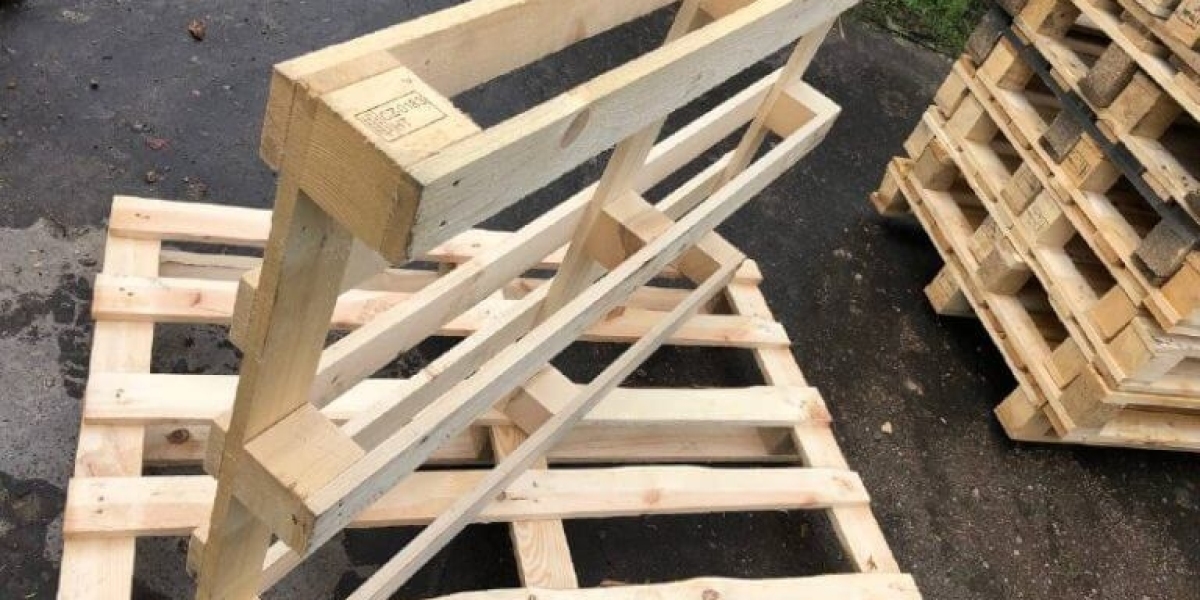 With the many factors that influence pallet prices it is crucial to understand why the question "how much do pallets cost?" is so difficult to answer.
With the many factors that influence pallet prices it is crucial to understand why the question "how much do pallets cost?" is so difficult to answer.Several variables contribute to the cost of pallets, including whether they are new or used, whether they are made of wood or plastic and how often they will be used. The function of the pallet will aid in determining which material is best suited to your requirements.
Lumber Cost
The cost of lumber is the single most significant factor that determines pallet pricing. Pallet manufacturers purchase wood by the board foot, and even small variations in lumber prices can impact prices. Pallet companies that purchase more wood can typically get better pricing and lower cost of operations. Costs are also affected by the type of wood used to make pallets. The majority of wood pallets are made of southern yellow pine. However, buyers who want to lower their shipping costs can choose hardwoods.
Besides the kind of wood used the dimensions and size of the lumber components that are included in a pallet may be a factor in determining the cost. For instance larger boards, such as blocks and stringers require more components to construct a pallet than smaller boards. This can add up to an additional expense for the customer.
When the e-commerce market resurgence began in 2021, prices of raw materials started to fall but the cost of pallets did not follow suit. The ease of shopping online was a major draw to consumers during the pandemic. Few have returned to their traditional shopping habits. This has kept the demand for pallets rising and prices soaring.
It's also more expensive to construct pallets from scratch than to reuse pallets. Pallet manufacturers need to employ workers to build the initial batch of pallets, and then instruct them on how to build pallets in future. This is a necessary cost for the business but it increases the cost per pallet the company needs to purchase to run its manufacturing facility.
In addition to raw material cost, pallets must be transported from the manufacturing plant to their customers' warehouses. Fuel prices, shipping distances and availability of drivers can be significant factors in transport costs.
Pallets must be cleaned and examined at the customer's place of business before they are used to ship products again. Cleaning and inspection costs can add up, particularly if the pallets are being used in a temperature-controlled environment such as a refrigerated warehouse.
Cost of Packaging Materials
The cost of a pallet is affected by the nature of the packaging. The pallet's construction, whether it is made of plastic, wood or other materials, and whether or not it is new or recycled, also affects its price. The dimensions, the quality and whether it is standard or custom-sized are other elements. In addition, the cost of transporting a pallet also plays an integral role in the overall cost.
In some instances materials with higher quality may cost more. This is especially true when pallet manufacturers purchase their materials directly from lumber producers who often have different classification systems than the average lumber buyer. Lumber graded for construction or furniture is usually higher-quality than industrial grades used in the production of pallets.
The cost of pallets is also influenced by regional variations in prices for pallets. Although lumber and transportation costs are declining, many regional suppliers still struggle to stay competitive. This is due to the fact that they're still not fully recovered from the price hikes last year.
Pallets made of top-quality materials can help businesses save money over time. These pallets will not only last longer than pallets that are less robust, but they could also reduce shipping costs by enhancing the security of products and reducing the risk of damage during transport.
Some pallet manufacturers provide bulk plastic sheets and pallet liners for affordable prices. These materials can help protect your shipment from debris, water damage and ultraviolet (UV) radiation while also ensuring their secure placement on the pallet. They are also a great choice for covering Gaylord containers and for securing the shipments inside warehouses. Additionally, companies can purchase high-density polyethylene (HDPE) sheets in a wide range of sizes that will meet their needs.
Cost of Labor
When companies are looking to purchase pallets, they can choose from a variety of options. Pallets are available in wood, plastic metal, special materials. Some are reusable, whereas others are one-use or shipping pallets. The material they select will affect the price. It will also determine if they pay a flat fee per usage, or buy them at cost. Other factors include as regional availability, the quantity of pallets required and if they are selecting new or used.
Raw material costs are the most significant factor in the cost of pallets. Lumber is the main source of this, and it can be affected by weather, market, and local conditions. The lumber industry is affected by seasonality as mills reduce production during the winter.
Labor and overhead costs are other major components of pallet prices. Manufacturers have fixed overhead costs including rent, utilities and machine expenses that must be paid for. These costs can fluctuate based on the local unemployment rate or state of the economy. Manufacturers also have to pay workers for their work, and wages will vary based on the work experience and skills of the workers.
Pallets are also affected by a range of additional fees. For instance, if a pallet requires heat treatment to facilitate international shipping, this could increase the cost. Additionally, companies may need to purchase a specific shipping case that protects the pallet and goods from damage.
Another crucial aspect to consider is how pallets are stored and utilized. For example when a company is using 3PL warehouse services and storage charges for each pallet in the warehouse. These fees are usually billed each month, but could be charged weekly or bi-monthly according to the 3PL.
It is essential to comprehend the factors that affect the cost of pallets. Knowing the costs behind pallets allows companies to make better informed choices about their purchases while balancing their the operational and budgetary requirements.
Cost of Packaging Equipment
The price of packaging equipment is influenced by a large number of factors. The most crucial elements are the choice of materials and durability machine range and complexity, as well as mechanical design. The type and quality resin used in plastic pallets is a significant factor when it comes to cost. Picking a high-quality, durable material will decrease the requirement for replacements and reduce operational costs over time.
The type of lumber that is used to make the deck boards, stringers and block boards of a wooden pallet has a significant effect on the total cost of materials. The industrial grades of wood like southern yellow pine, tend to be less expensive than premium lumber used for construction or furniture. Market conditions can affect the availability and cost of different species. If lumber prices rise then the price of a finished pallet may also increase.
Another important aspect is the amount of work required to build the pallet. This can vary based on the dimensions and complexity of the pallet as well as regional labor rates and availability. As an example, large pallets (Https://agronytradingllc.Com) require multiple people to put together and adjust the machinery in order to ensure the proper fit. Furthermore certain pallets are built with custom specifications that require specialized tools to be designed.
The cost of the packaging machine itself can be a significant factor in the final product cost. It's tempting to buy cheaper machinery. However the more sophisticated machine will reduce the initial cost by saving on materials and labor in the long run. A superior machine will also produce more packaging per cycle, which can reduce costs for packaging.
When choosing a packaging machine, the best option is to work with a local distributor that offers many options. They can provide expert guidance and assist to select the right machine for your needs. In addition, they will be able to provide financing options and a wide array of support services that can reduce the cost of the ownership of your new packaging equipment.







